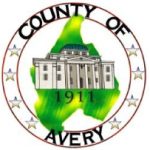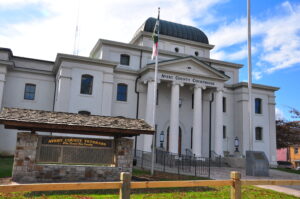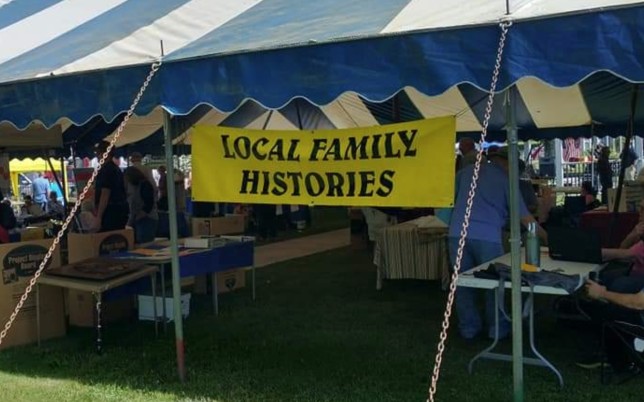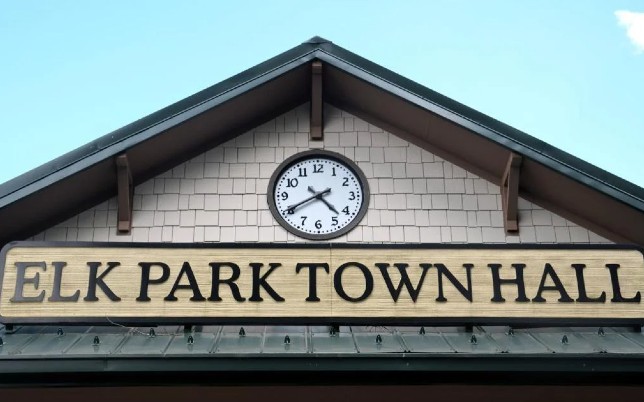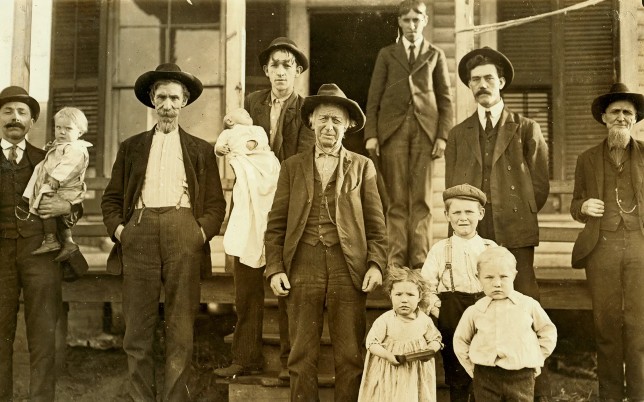Avery County History
Avery County is the newest of North Carolina’s 100 counties as it was formed on February 23, 1911, from parts of Caldwell County, Mitchell County, and Watauga County. It was named for the American Revolutionary War Colonel and the first Attorney General of North Carolina, Waightstill Avery.
The county seat was originally in the Town of Elk Park, which was then the largest town in the county, located on the county’s north end, on the Tennessee border. Upon completion of the county’s courthouse in 1912, the county seat was moved to the more centrally located unincorporated area known as Fields of Toe, for the meadows along the head of the Toe River, in what is now the town of Newland.
At an election held on August 1, 1911, Old Fields of Toe was selected as the county seat. It so happened that this land had been granted to Col. Waightstill Avery on November 9, 1783. In his honor, the 100th county was named, while the county seat was called Newland, in honor of W. C. Newland, of Lenoir, then the lieutenant governor of North Carolina and an influential Democrat, who helped garner support in the then heavily Democratic legislature in Raleigh, for Avery County, an overwhelmingly pro-Union Republican area, becoming the state’s 100th and final county.
According to local legend, Elk Park citizens were upset at the decision to move of the county seat from their town, and they refused to give up the books. The then sheriff, like all county officials, was a Democrat and an interim appointee of the Democratic governor in Raleigh, who would hold office from July 1, 1911, until the next election cycle in late 1912, when the almost all-Republican electorate would undoubtedly vote in all Republicans as local officials. The sheriff was leery of confronting the irate local Elk Park citizens, so his wife baked cookies and had their pastor deliver them as a peace offering. The citizens then cheerfully handed over the books, which were sent to the new offices at the new courthouse in Newland
The jail and courthouse were completed sufficiently to allow court proceedings to be held in April 1913 with Judge Daniels presiding.
The early buildings of Avery County reflect the nature of life in the area. Cabins, barns, and sheds were constructed mainly of logs. Rock was plentiful and used for foundations and chimneys. After Avery County was formed in 1911, work began on the courthouse and the present-day Avery County Historical Museum in 1912. The Avery County Courthouse is two-story with a beautiful crowning cupola, kept to the traditional Neoclassical Revival style of other North Carolina Courthouses.
| Col 1 | Col 2 |
|---|---|
| Founded | February 23, 1911 |
| County Seat | Newland |
| Area | 247 mi² |
| Largest Town | Banner Elk |
| Population (2021) | 17,864 |
| Max. Elevation | Grassy Ridge Bald (6,191 ft) |
| Named For | Col. Waightstill Avery |
| Parent Counties | Caldwell, Mitchell, Watauga |
| Website | averycountync.gov |
Geography
According to the U.S. Census Bureau, the county has a total area of 247 square miles, of which 247 square miles is land and 0.1 square miles (0.06%) is water.
Avery County is extremely rural and mountainous with all of the county’s terrain located within the Appalachian Mountains range; with a mean altitude of 3,510 feet. Avery is the second-highest county east of the Mississippi behind nearby Haywood County to the southwest. The highest point in the county is Grassy Ridge Bald, 6,165 feet above sea level. Most of Grandfather Mountain, whose highest point is 5,946 feet and Calloway Peak on the tri-point bordering Watauga and Caldwell Counties, are within Avery County. At 5,526 feet, Beech Mountain (also shared with Watauga County) is the highest incorporated community east of the Mississippi River, while at 3,606 feet Newland is the highest county seat in the Eastern United States.
- Burke County, North Carolina – (South)
- Caldwell County, North Carolina – (East)
- Carter County, Tennessee – (Northwest)
- Johnson County, Tennessee – (North)
- McDowell County, North Carolina – (South)
- Mitchell County, North Carolina – (West)
- Watauga County, North Carolina – (Northeast)
| Highway Sign | Highway Name | Length | Start | End | Existed |
|---|---|---|---|---|---|
 | U.S. Route 19 East | 75.9 mi | Bluff City, TN (North) | Cane River, NC (North) | 1930 – present |
 | U.S. Route 221 | 153.5 mi | 1930 – present |
COMING SOON
| Location Name | Location Type | Population | Elevation | Named For |
|---|---|---|---|---|
| Altamont | Unincorporated | 1,376 | 3,268 | “High Mountain” |
| Banner Elk | Town | 1,473 | 3,701 | Martin Banner |
| Beech Mountain | Town | 766 | 5,506 | Beech Mountain |
| Carey’s Flat | Township | aka Gragg, NC | ||
| Cranberry | Unincorporated | 538 | 3,130 | Cranberry Creek |
| Crossnore | Town | 239 | 3,369 | George Crossnore |
| Elk Park | Town | 495 | 3,166 | Number of elk in the area. |
| Frank | Unincorporated | 222 | 2,982 | |
| Gragg | Unincorporated | 2,664 | William Gragg / AKA: Carey’s Flat | |
| Grandfather | Village | 24 | 3,914 | Grandfather Mountain |
| Heaton | Unincorporated | 337 | 3,045 | Heaton Family / AKA: Ford of Elk |
| Hughes | Township | 3,790 | ||
| Ingalls | Unincorporated | 3,226 | 2,766 | Senator James J. Ingalls |
| Linville | Census Designated Place | 426 | 3,665 | William Linville |
| Linville Falls | Unincorporated | 135 | 3,268 | William Linville |
| Minneapolis | Town | 300 | 3,665 | Minneapolis, MN by Dr. L. E. Clark |
| Montezuma | Unincorporated | 350 | 3,766 | Aztec Chief / AKA: Bull Scrape |
| Newland | Town | 710 | 3,606 | Lt. Governor William Calhoun Newland |
| Pineola | Unincorporated | 982 | 3,550 | Pine trees growing in the vicinity and for Ola Penland, daughter of a local hotel keeper. |
| Plumtree | Unincorporated | 658 | 2,867 | Wild Plumtrees |
| Pyatte | Township | 251 | 3,507 | |
| Roaring Creek | Unincorporated | 438 | 2,982 | Roaring Creek |
| Seven Devils | Town | 441 | 3,944 | 7 Founders / 7 Peaks |
| Sugar Mountain | Village | 371 | 4,432 | Snow on the mountain resembled grains of sugar. |
| Three Mile | Unincorporated | 2,890 | The distance of three miles between US 19-E to US 221. | |
| Vale | Unicorporated | 3,550 |
| ID | Title | Nearest Town | Location | Date Cast | Details |
|---|---|---|---|---|---|
| N-5 | Yellow Mountain Road | Frank | Map | 1938 | Read More |
| N-6 | Cranberry Mines | Elk Park | Map | 1939 | Read More |
| N-18 | Asa Gray | Linville | Map | 1949 | Read More |
| N-22 | Andre Michaux | Linville | Map | 1949 | Read More |
| N-36 | Shepherd M. Dugger | Banner Elk | Map | 1971 | Read More |
| N-43 | Lees-McRae College | Banner Elk | Map | 1993 | Read More |
| N-44 | Crossnore School | Crossnore | Map | 1997 | Read More |
This list includes properties and districts listed on the National Register of Historic Places in Avery County, North Carolina.
The State of North Carolina has a group of protected areas known as the North Carolina State Park System, which is managed by the North Carolina Division of Parks and Recreation (NCDPR), an agency of the North Carolina Department of Natural and Cultural Resources (NCDNCR). Units of the system can only be established by an act of the General Assembly of North Carolina. The park system began in 1916 when the summit of Mount Mitchell became first state park in the Southeastern United States. According to the Division of Parks & Recreation, “the State Parks Act of 1987 lists six types of units included in the NC State Parks System.” These are State Parks, State Recreation Areas, State Natural Areas, State Lakes, State Trails, and State Rivers. All units of the system are owned and/or managed by the division, and the division leases some of the units to other agencies for operation. Most units of the park system are also components of State Nature and Historic Preserve.
| Name | City | Cemetery ID | Memorials |
|---|---|---|---|
| Aycock Family Cemetery | Altamont | 2543418 | 1 |
| Maltba Family Cemetery | Altamont | 2480273 | 2 |
| Pisgah United Methodist Church Cemetery | Altamont | 2180288 | 660 |
| Wise Cemetery | Altamont | 2451923 | 11 |
| Banner Elk Cemetery | Banner Elk | 1993996 | 338 |
| Banner Elk United Methodist Memorial Garden | Banner Elk | 2636713 | 9 |

